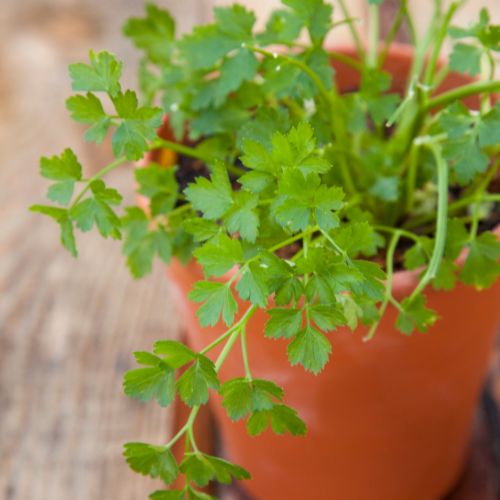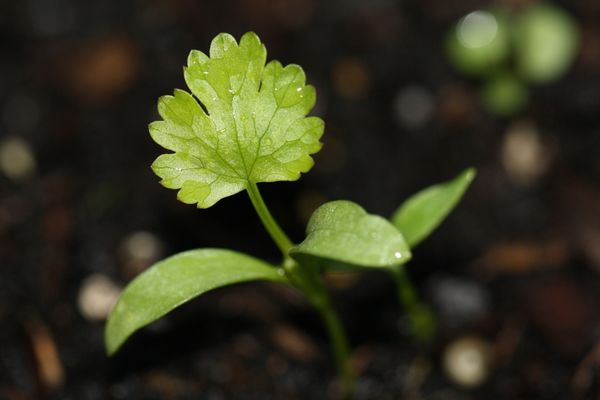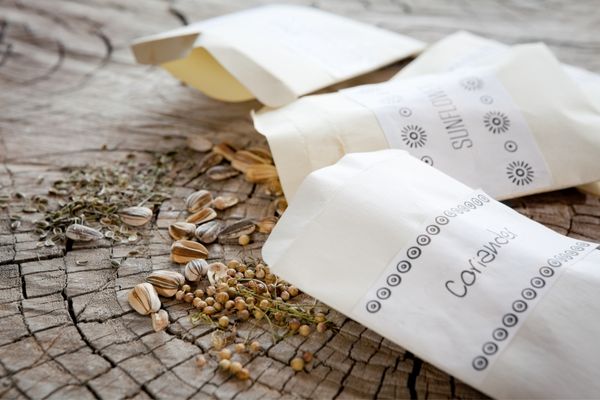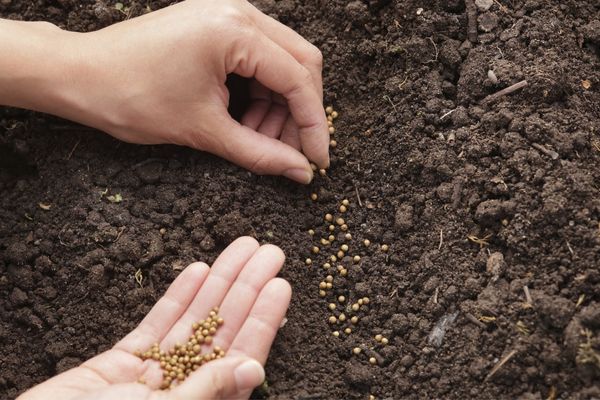How To Grow Cilantro In A Pot
Have you ever wanted to try growing your own cilantro but need more space or time for a full garden? Well, now you can! Growing cilantro in a pot is easy and doesn’t take up much room – all you need is suitable soil, some water, and plenty of sunshine. This article will cover how to grow cilantro in a pot and what tips you should know before getting started.
Growing cilantro in a pot or container is an easy way to add a fresh and flavorful herb to your home garden. This article will walk you through the step-by-step process of how to grow cilantro in a pot, from choosing the right size container and soil mix to harvesting the final product. Get ready to get your hands dirty and add delicious flavor to your meals!

With its unique flavor and freshness, cilantro is a herb that’s used in many recipes. But if you don’t have access to a garden or yard, can you still grow cilantro at home with success? In this article, we’ll cover the basics of how to grow cilantro indoors in a pot. Learn all about the soil type you should use, how much water and sunlight your cilantro needs, and more!
If you’re looking for a delicious addition to your meals that’s easy to grow and requires little effort, then cilantro is the perfect herb! In this article, we’ll explore how to grow cilantro successfully in a pot so you can enjoy this wonderful herb’s fresh taste all year round. So let’s start and learn how to grow cilantro right in your backyard!
It’s easier than you think! This blog article will explore the basics of growing cilantro in a pot, from choosing the suitable variety to harvesting and storage tips. So don’t let limited space stop you from having fresh cilantro for all your cooking needs!
What is Cilantro

Cilantro is an annual herb in the mint family. It is native to the Mediterranean region and has been used for centuries in cuisines worldwide. The leaves are used fresh or dried, and the seeds can be ground into a powder.
Cilantro is a fast-growing plant that does best in full sun. It can be started from seed or transplanted from a nursery. If starting from seed, sow the seeds indoors about six weeks before the last frost date. Transplant seedlings into pots or other containers when they are about four inches tall.
Cilantro prefers well-drained soil and will not tolerate soggy conditions. Water regularly, letting the soil dry out slightly between watering. Fertilize every two to four weeks with a general-purpose fertilizer.
Pinch back cilantro plants to encourage bushier growth. Harvest leaves as needed, cutting them back to within an inch of the stem. To harvest the seeds, allow the flowers to fade and die back naturally. Cut off the seed heads and store them in a dry, dark place until ready to use
Growing Requirements for Cilantro

Cilantro is a versatile herb that can be used in many different dishes, and it is relatively easy to grow. However, there are a few things to keep in mind when growing cilantro in a pot.
First of all, cilantro does best in well-drained soil. Be sure to use a pot with drainage holes to avoid root rot. You will also need to water cilantro regularly, especially during hot weather. Be sure to allow the soil to dry out between watering.
Fertilize cilantro every few weeks with a balanced fertilizer to keep the plants healthy and promote growth. When the weather begins to cool down in fall, cut back on watering and fertilizing to avoid encouraging too much growth.
BUY INDOOR GARDEN ESSENTIALS ON AMAZON
Cilantro will bolt (flower and go to seed) if the temperature gets too hot, so it is best to grow it in spring or fall when the weather is cooler. If you live in a warm climate, you can try growing cilantro indoors near a window where it will get plenty of light.
How to Plant Cilantro in a Pot
To plant cilantro in a pot, you’ll need a pot with drainage holes, cilantro seeds, and potting mix. Fill the pot with potting mix, then wet it until it’s damp. Plant the cilantro seeds about 1/4 inch deep and water them. Keep the soil moist but not soggy, and in 5-10 days, you should see seedlings. Once the seedlings are about 6 inches tall, thin them so that there are only a few plants per pot. When the plants are big enough to harvest, cut them back to encourage more growth.

- Select a suitable container to sow the cilantro seeds.
- Select good quality soil for planting cilantro. (fast-draining potting soil)
- Moisten the soil moderately.
- Sow the seeds
- Now cover the seeds with some soil (make sure not to add a lot of soil as a cover for the cilantro seeds)
- Spray some more water to moisten the soil thoroughly.
- Place the container in light shade (ensure you avoid the direct sun if the temperature is too high in your locality.
- You will notice growing leaves after 7-8 days.
- Keep harvesting cilantro leaves weekly so that you can get a maximum harvest from a single plant.
Will cilantro grow back after cutting?
Cilantro is rather simple to grow and doesn’t need any particular maintenance. Cilantro leaves will keep growing back if clipped correctly for many more harvests!
For tips on how to harvest your own cilantro so that you can enjoy fresh cilantro all season long, check this guide to know “how to plant cilantro in a pot”.
Does cilantro need full sun?
Although cilantro doesn’t require a lot of direct sunlight to develop, it does need a few hours of it each day to stay healthy. It is a heat-sensitive plant that does best in temperate to tropical environments.
Gardeners should steer clear of planting cilantro in locations where it will be exposed to intense afternoon sunlight for some hours. Cilantro leaves are prone to burning in the bright sunshine between 11:00 and 2:00 in the afternoon when UV radiation is at its peak.
How big of a pot does a cilantro plant need?
The pot for planting cilantro should ideally be 18 inches broad and 8 to 10 inches deep.
How often do you water cilantro?
For optimal growth, they require roughly 1 inch of water every week. Plant seedlings 6 inches apart to give them room to grow strong leaves. The plants require less water every week once they are established. Don’t overwater them, but keep them moist nonetheless.
Should you let cilantro flower?
Sadly, your cilantro soon loses its flavor once it begins to bolt. And removing the white buds won’t restore the flavor to the plant’s leaves. The leaves won’t change; they’ll still taste bad.
What happens if you don’t trim cilantro?
Seeding and flowering of cilantro plants can turn the leaves bitter. Regular pruning of the cilantro plant can help you maintain a good taste and avoid bitterness.
What not to plant with cilantro?
You definitely won’t be growing multiple plants in a single pot. But if you have a large planting container and are planning to plant different plants, avoid the ones that can’t go well with the cilantro.
- Carrots
- Fennel
- Dill
- Oregano
- Lavender
- Rosemary
- Tomatoes
- Peppers
Care and Maintenance of Cilantro
Cilantro is a delicate herb that requires proper care and maintenance to thrive. When growing cilantro in a pot, it is essential to water the plant regularly and keep the soil moist but not soggy. The plant should also be fertilized every few weeks with a water-soluble fertilizer. Cilantro does best in full sun but can tolerate some partial shade. If the leaves begin to yellow or the plant starts to bolt (send up a flower stalk), it indicates that the cilantro is stressed and needs more attention. To prevent bolting, ensure the plant gets enough water and fertilization. If you live in a hot climate, growing cilantro in a pot that can be moved indoors or into partial shade during the hottest months may be necessary. With proper care, your cilantro plant will provide fresh leaves for cooking and garnishing all season long.
Must-Have Garden Essentials from Amazon:
1 Gardening Tools Set from Alloy Steel
2 Indoor Garden Tools for Gardening
4 Succulent Tools,24 Pcs Mini Garden Tools Set
5 Seeding Square – Seed Sowing Template for Maximum Harvest
6 VIVOSUN 5-Pack 3 Gallon Plant Grow Bags Heavy Duty
7 iDOO Hydroponics Growing System 12Pods
8 Persist Horticultural Charcoal Soil for Indoor Plants
9 GroTech Garden GroBucket Self-Watering Planter
10 Outdoor & Indoor Plant Fertilizer – Nutrient-Dense Plant Food to Increase Bloom Size & Quantity
Troubleshooting Tips
If your cilantro is not growing as fast as you’d like, or if the leaves are yellowing or wilting, there are a few things you can do to troubleshoot.
First, make sure that you are watering your cilantro regularly. Cilantro likes to stay moist, so be sure to check the soil every few days and water as needed.
If you think your cilantro is getting too much water, try drainage holes in the bottom of your pot. Allowing excess water to drain away will help prevent root rot.
If your cilantro is still not looking its best, try fertilizing it with liquid plant food. This will give it the nutrients it needs to grow strong and healthy.
Harvesting Cilantro
Cilantro is a wonderfully fragrant and flavorful herb that is used in a variety of cuisines. It can be grown easily in a pot and is a simple process to harvest the leaves.
To harvest cilantro, snip the leaves from the stem using scissors or gardening shears. You can cut as much or as little as you need, and the plant will continue to produce new leaves. Once you have harvested the leaves, wash them thoroughly and use them immediately or store them in the fridge for later use.
Cilantro is a delicate herb, so it’s best to use it fresh. If you need to store it, wrap the leaves tightly in a damp paper towel before placing them in a plastic baggie. This will help keep them from drying out and losing their flavor.
How do I grow cilantro in pots?
Growing cilantro in pots is a great way to enjoy fresh herbs in your home!
- To get started, choose a pot that has drainage holes in the bottom and fill it with good potting soil.
- Make sure to choose a pot that is at least 6 inches deep.
- Plant the cilantro seeds about a quarter inch deep and two inches apart.
- Keep the soil moist by watering regularly, but be careful not to over-water.
- Place the pot in an area with plenty of sunlight, and you should start to see the cilantro growing in a few weeks.
- Be sure to harvest the leaves regularly to ensure they stay tender and flavorful.
- Enjoy your homegrown cilantro!
Must-Have Garden Essentials from Amazon:
1 Gardening Tools Set from Alloy Steel
2 Indoor Garden Tools for Gardening
4 Succulent Tools,24 Pcs Mini Garden Tools Set
5 Seeding Square – Seed Sowing Template for Maximum Harvest
6 VIVOSUN 5-Pack 3 Gallon Plant Grow Bags Heavy Duty
7 iDOO Hydroponics Growing System 12Pods
8 Persist Horticultural Charcoal Soil for Indoor Plants
9 GroTech Garden GroBucket Self-Watering Planter
10 Outdoor & Indoor Plant Fertilizer – Nutrient-Dense Plant Food to Increase Bloom Size & Quantity
How big of a pot do I need for cilantro?
Cilantro pot size plays an essential role in the healthy growth of cilantro. When growing cilantro, starting with a pot at least 18 inches in diameter and 8 inches deep is best. This size allows adequate root space for the plant and will help it grow strong. However, you can also use a larger pot if you want to.
If you want to grow cilantro/coriander in larger quantities, look for a bigger pot size with adequate space to grow cilantro healthily. A small pot can
Tips For Growing The Best Cilantro
Cilantro is a great herb to grow in your garden! Here are some tips to help you get the best cilantro harvest possible:
- Start with good-quality soil. Make sure it is well-draining and amended with compost or fertilizer.
- Plant cilantro in areas of full sun to partial shade.
- Water cilantro regularly, especially during dry periods.
- Maintain adequate space among the cilantro seedlings to give them enough space and airflow.
- Fertilize cilantro every few weeks with a balanced fertilizer.
- Harvest cilantro leaves before the plant flowers, as the flavor will be at its best.
- To maximize the harvest, pick the leaves from outside the plant and let the center grow.
I hope these tips help you grow the best cilantro in a pot! Good luck with your own herb gardening!